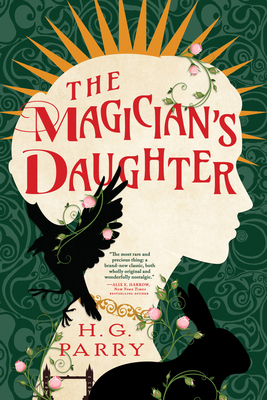 The Magician's Daughter by H.G. Parry
The Magician's Daughter by H.G. Parry Format: eARC
Source: supplied by publisher via Edelweiss
Formats available: paperback, ebook, audiobook
Genres: coming of age, fantasy, historical fantasy
Pages: 400
Published by Redhook on February 28, 2023
Purchasing Info: Author's Website, Publisher's Website, Amazon, Barnes & Noble, Kobo, Bookshop.org, Better World Books
Goodreads
A young woman raised on an isolated island by a magician discovers things aren’t as they seem and must venture into early 1900s England to return magic to the world in this lush and lyrical historical fantasy.
It is 1912, and for the last seventy years magic has all but disappeared from the world. Yet magic is all Biddy has ever known. Orphaned as a baby, Biddy grew up on Hy-Brasil, a legendary island off the coast of Ireland hidden by magic and glimpsed by rare travelers who return with stories of wild black rabbits and a lone magician in a castle. To Biddy, the island is her home, a place of ancient trees and sea-salt air and mysteries, and the magician, Rowan, is her guardian. She loves both, but as her seventeenth birthday approaches, she is stifled by her solitude and frustrated by Rowan's refusal to let her leave. One night, Rowan fails to come home from his mysterious travels. To rescue him, Biddy ventures into his nightmares and learns not only where he goes every night, but that Rowan has powerful enemies. Determination to protect her home and her guardian, Biddy's journey will take her away from the safety of her childhood, to the poorhouses of Whitechapel, a secret castle beneath London streets, the ruins of an ancient civilization, and finally to a desperate chance to restore lost magic. But the closer she comes to answers, the more she comes to question everything she has ever believed about Rowan, her own origins, and the cost of bringing magic back into the world.
For more from H. G. Parry, check out:
The Shadow HistoriesA Declaration of the Rights of Magicians A Radical Act of Free Magic
The Unlikely Escape of Uriah Heep
My Review:
The story of The Magician’s Daughter is a case of not just two great tastes going great together, but three great tastes combining to form a delicious and occasionally bittersweet treat of epic proportions.
It begins as a coming-of-age story. Biddy is just 16 when we first meet her. Or she is finally 16, an age when she may not yet be an adult but she is certainly no longer a child, and no longer believes childish things.
It’s 1912 in her version of our world, and the situation has been going to hell in that handcart for 70 years. Because nearly all of the magic has leaked out of the world. Or has been closed off from the world. Or has been used up by the world.
Which is one of the central questions of the whole story.
But Biddy has grown up on the legendary, mystical, nearly-mythical island of Hy-Brasil off the coast of Ireland. An island that was, once upon a time when the world was new and magic was abundant, a fortress of the Tuatha Dé Danann in their nearly-endless war with the Fomorians.
Hy-Brasil still has a bit of magic left, the magic that keeps the island lost in fog and protects Biddy and her guardians, the wizard Rowan and his familiar-spirit Hutchincroft. The island protects them, but it also restricts them. At least it does Biddy, who sees her father-figure leave the island every night in search of more wisps of magic while she is forced to remain behind.
While Rowan’s excuses for why she cannot go to the mainland become more and more threadbare. As do most of his explanations about why the mainland is dangerous and what is going on in the world. The mask that Rowan uses to hide his very real worries about the fading of magic and the reasons behind it no longer conceal his fears or his hopes.
But it’s those fears that come true first, when the forces of the powerful, grasping Mages’ Council that he fled 70 years ago entrap him at last. And Biddy is forced to grab the reins of what little magic she can in order to spring him from their trap.
Which is when Biddy learns that she should have been much more careful about what she wished for. Rowan doesn’t merely let her leave the island, he deliberately removes her from its protections and seemingly sets her out as bait for his enemies.
Along the way, Biddy learns that the world is not remotely like what she dreamed of when she read all the books in the island’s vast library. It is much darker and infinitely more dangerous. And it holds secrets from her even as it exposes the secrets that Rowan has been keeping all her life.
The magic of the world is gone, leaving the world a dark and dismal place. Rowan has the glimmer of the hope of a plan to bring it back. All he needs to do is break open the magical secret that has been hiding, literally, in Biddy’s heart.
If he can find the way. If Biddy still trusts him enough to let him after all the secrets he’s been keeping from her for so long. And if they can keep one step ahead of the forces arrayed against them – even if they have to sacrifice everything along the way.
Escape Rating A+: At the top, I said this story encompassed three great tastes that go great together. The obvious is Biddy’s coming-of-age story. This is also very much a found family story – and a charming one at that. And it’s a power corrupts and absolute power corrupts absolutely kind of story hidden under an almost gothic tale of politics and traps and plots and creatures straight out of the pages of the darkest of dark fantasy.
What makes Biddy’s coming of age story work so well is that she begins as a clean slate. She literally has not been in the real world and has no clue what it’s like. So we see her 1912 through the eyes of someone who had no idea what to expect and who has no built in “but we’ve always done it that way” set of blinders. She knows that so much of what she sees is just plain wrong even if she doesn’t know how to fix it. And she’s aware of the privilege that Rowan and Hutchincroft raised her in. Not a privilege of material things, and not even a privilege of always knowing where the next meal was coming from because that wasn’t always true, but the privilege of knowing that she was loved and that she could explore the island and any thought or idea she might have gathered from books or dreams or observation. And especially the privilege of safety at all times, until that safety was shattered at last.
The found family aspect of this tale is both sweet and bitter. Rowan and Hutchincroft see Biddy as their child, their daughter, even though they did not make her and did not bring her with them because they had any obligation to her. Instead, this is a love that grew over time, and care, and arguments, and impatience and rebellion and mending skinned knees and testing boundaries. And it’s a love that endures even after Biddy learns that Rowan has been keeping gigantic secrets from her about pretty much everything.
And then, on top of that beautiful foundation, there’s the story about magic going away and power corrupting. There’s always a question in Rowan’s mind, and in the reader’s mind as well, as to whether the decline in magic was natural or was caused by human activity. (Now that I think about it there’s a parallel to the climate change arguments I didn’t see as I read the book.) Coming out of that question about a natural decrease versus a man-made one there’s a follow-up question about whether the best use of the remaining magic is to hoard it so that it can be used for the ‘greater good’ – and who gets to define THAT – or whether the magic should be set free to help as it wills for as long as it can.
But if it is a human-made problem, should they hunt for a human-made solution, whatever that might be? Which is where all those questions about power corrupting and absolute power corrupting absolutely come sweeping in on the wings of some truly horrible little flying monsters – and go out on the feet of one frightened young woman who is willing to sacrifice everything for the people she loves.
From beginning to end, an utterly charming story that makes the reader fall in love with its characters and their compelling need to fix their broken world.
One last thing that isn’t related but kind of is. As I read The Magician’s Daughter it reminded me of Freya Marske’s Last Binding series, whose first two entries are A Marvellous Light and A Restless Truth, which are both utterly charming and lovely. The world of the Last Binding is not bereft of magic the same way that the setting of The Magician’s Daughter is, but both are set in alternate pre-World War I Englands in which there is a Mages’ Council that is well down the path of the ends justifying the means because of the power corrupting. So if you’re a fan of one you might very well fall in love with the other, as I most certainly did.

 Junkyard War (Shining Smith #3) by
Junkyard War (Shining Smith #3) by  But Shining is not the only human queen, because every true hero – especially if that’s not remotely what they want to be – creates their own archenemy – or the other way around. Clarisse Warhammer targeted Shining all the way back in
But Shining is not the only human queen, because every true hero – especially if that’s not remotely what they want to be – creates their own archenemy – or the other way around. Clarisse Warhammer targeted Shining all the way back in 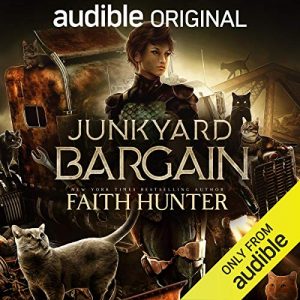 Which means two things. First, the books pile layer upon layer building Shining’s world, so you really need to start at the beginning in
Which means two things. First, the books pile layer upon layer building Shining’s world, so you really need to start at the beginning in 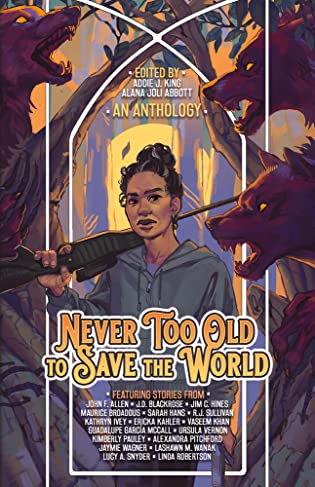 Never Too Old to Save the World: A Midlife Calling Anthology by
Never Too Old to Save the World: A Midlife Calling Anthology by 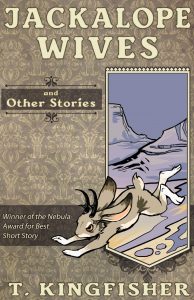 My favorite fantasy story is “Jackalope Wives” by Ursula Vernon – who also writes marvelously fantastic fantasy and horror as T. Kingfisher. “Jackalope Wives” is the only story in the book that has been previously published, originally in
My favorite fantasy story is “Jackalope Wives” by Ursula Vernon – who also writes marvelously fantastic fantasy and horror as T. Kingfisher. “Jackalope Wives” is the only story in the book that has been previously published, originally in 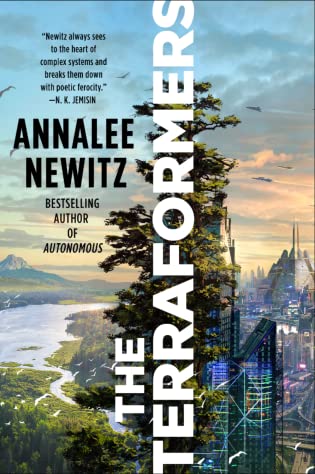 The Terraformers by
The Terraformers by 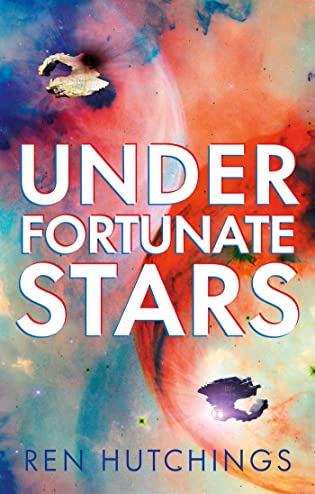 Under Fortunate Stars by
Under Fortunate Stars by 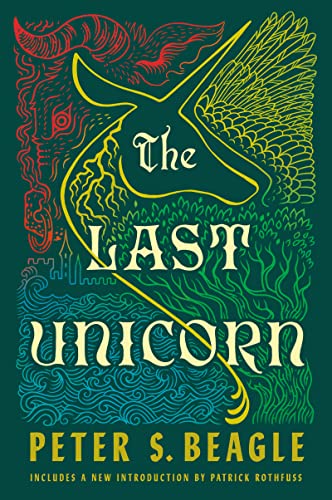 The Last Unicorn (The Last Unicorn, #1) by
The Last Unicorn (The Last Unicorn, #1) by 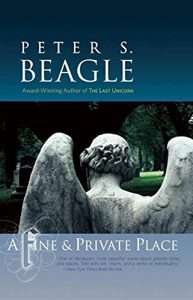 It’s beautiful, it’s haunting, and it’s as perfect a story in its own way as The Princess Bride is in its. Read it and quite possibly weep, but read it all the same.
It’s beautiful, it’s haunting, and it’s as perfect a story in its own way as The Princess Bride is in its. Read it and quite possibly weep, but read it all the same.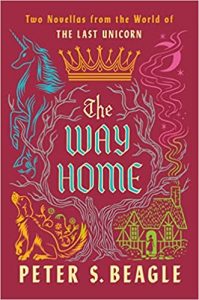 There is just so much in The Last Unicorn. It’s the kind of story that sinks deep into the reader’s soul and doesn’t leave. I’m so glad I finally read it and hope that you will be intrigued enough to do so as well.
There is just so much in The Last Unicorn. It’s the kind of story that sinks deep into the reader’s soul and doesn’t leave. I’m so glad I finally read it and hope that you will be intrigued enough to do so as well.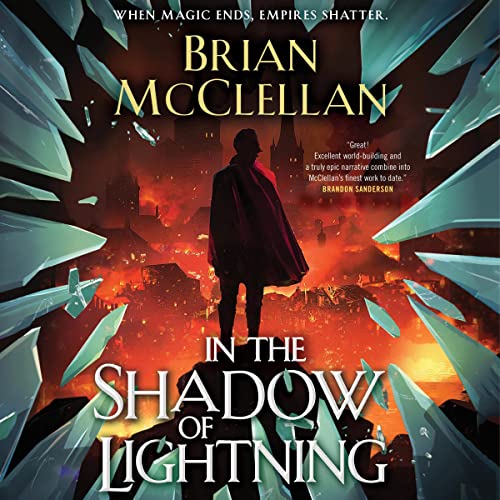 In the Shadow of Lightning (Glass Immortals, #1) by
In the Shadow of Lightning (Glass Immortals, #1) by 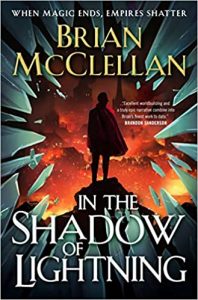 Escape Rating A+: “Glassdamn.” It rolls easily through the mind, or trippingly off the tongue, as though it’s an epithet that we’ve always used – or at least could have if we’d had a mind to. And glassdamnit but this is a terrific story.
Escape Rating A+: “Glassdamn.” It rolls easily through the mind, or trippingly off the tongue, as though it’s an epithet that we’ve always used – or at least could have if we’d had a mind to. And glassdamnit but this is a terrific story. Book Lovers by
Book Lovers by  Two years later, unbeknownst to each other, in the middle of trips that they’ve each been separately strong-armed into, they run into each other in the tiny town of Sunshine Falls, NC, to discover that their enmity isn’t really all that strong, but their bantering snarkitude is excellent.
Two years later, unbeknownst to each other, in the middle of trips that they’ve each been separately strong-armed into, they run into each other in the tiny town of Sunshine Falls, NC, to discover that their enmity isn’t really all that strong, but their bantering snarkitude is excellent.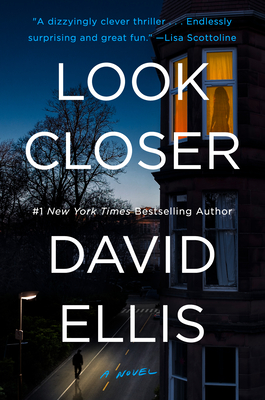 Look Closer by
Look Closer by 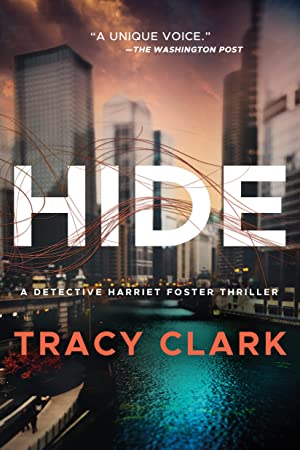 Hide (Detective Harriet Foster #1) by
Hide (Detective Harriet Foster #1) by 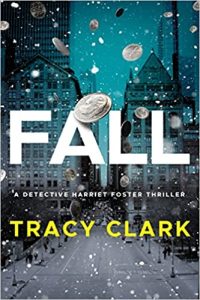 Hide is the first book in what looks to be a compelling mystery suspense series. While it isn’t officially out until January 1, it is available NOW to Amazon Prime members as one of the Amazon First Reads books this month. So if you are as impatient to read it as I was there is a way to get it this month.
Hide is the first book in what looks to be a compelling mystery suspense series. While it isn’t officially out until January 1, it is available NOW to Amazon Prime members as one of the Amazon First Reads books this month. So if you are as impatient to read it as I was there is a way to get it this month.